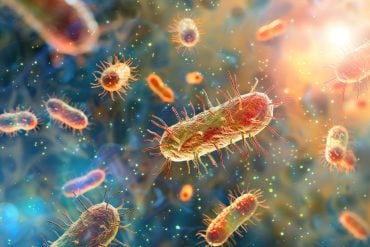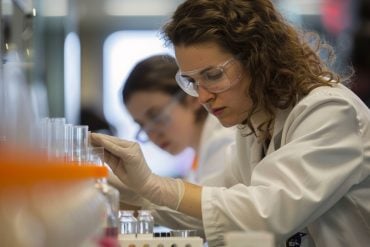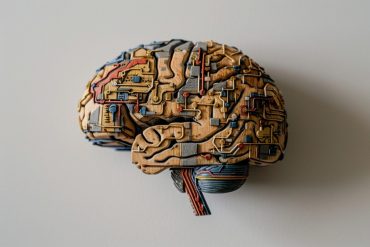Summary: Activating a receptor found in neurons in the habenula could help treat alcohol addiction and ease withdrawal symptoms, researchers report.
Source: Scripps Research Institute.
According to a new study by Scripps Research scientists, activating a receptor found in brain cells may help treat alcohol addiction and ease some withdrawal symptoms. The researchers studied the effects of activating the receptor in alcohol-addicted rats and reported the results today in the journal eNeuro.
“The big takeaway here is that we have a new molecular target linked to alcohol addiction,” says Olivier George, PhD, associate professor at Scripps Research. “This is something that will trigger a lot more research and hopefully eventually lead to the discovery of new medicines not only for alcohol addiction but drug addiction in general.”
An estimated 15 million adults in the United States have alcohol use disorder–compulsive alcohol drinking and a loss of control over alcohol intake. Today, there are three medications approved by the Food and Drug Administration to treat alcohol addiction, but each has weaknesses and limitations.
In 2005, researchers sifting through the human genome for new receptors–looking for genetic sequences that resembled known receptors–uncovered a G-protein coupled receptor (GPCR) dubbed GPR139. GPCRs play a large role in brain signaling, and some have been linked to mental disorders. Since discovering GPR139, scientists have shown that the receptor is primarily found in an area of the brain called the habenula. Since the habenula is activated during drug and alcohol withdrawal, George and his colleagues wondered whether GPR139 might play a role in addiction.
“We’re been very interested in the habenula because this is the area of the brain that produces withdrawal symptoms, which an animal or human then tries to avoid by taking another drink or another dose of a drug,” says George, who also serves as co-director of the institute’s Alcohol Research Center Animal Core.
In the new work, George’s group took advantage of an experimental compound, known as JNJ-63533054, that activates GPR139. They gave the compound orally to 12 non-alcohol-dependent male rats and 17 alcohol-dependent rats. The compound had no effect on the alcohol intake of animals that weren’t already dependent on alcohol or on the water intake of alcohol-addicted animals. But it did significantly decrease the alcohol intake of alcohol-addicted rats.
When Jenni Kononoff, PhD, a postdoctoral researcher in the George lab, looked more closely at the rats, she discovered that JNJ-63533054 was particularly effective at decreasing drinking in one subgroup of animals: those that had the highest alcohol intake and showed compulsive drinking behavior. These rats were so addicted to alcohol, that they would normally continue to drink even when their alcohol was adulterated with a bitter taste.
“What this tells us is that this receptor is activated when you’re drinking a lot and going through withdrawal,” says George.
The pain threshold of rats–or humans–undergoing alcohol withdrawal is generally lower than normal, so to make a further connection between GPR139 and withdrawal, the scientists tracked the pain threshold of 17 rats going through alcohol withdrawal. When the rats were treated with JNJ-63533054, they found, the animals had a higher threshold for pain. Similar to the first experiment, the effect was strongest in rats that had the highest levels of compulsive drinking behavior.
This suggests that, once again, GPR139 is activated during withdrawal only in severe cases of alcohol addiction, George says, and the drug helps mediate the physical pain associated with withdrawal in these cases.
Finally, the team used thin tubes to deliver JNJ-63533054 to small areas of the brain. The drug decreased alcohol intake when it was infused into the habenula, they found, but not other brain areas, confirming the importance of the brain region in addiction and withdrawal.?

While the research was only performed in male rats, and only alcohol addiction was studied, George suspects the results will hold true both for females and for other drug addiction, since the habenula has been shown to be critical in drug withdrawal more broadly.
“The good thing about this type of target is that is almost exclusively expressed in the brain, which limits side effects, and it seems to have no effect on individuals who are not dependent,” says George. “Those are both positive indications of the receptor being druggable.”
His group is already planning more studies on GPR139’s link to addiction and withdrawal, and the researchers are looking for additional compounds that activate or block the receptor.
In addition to George and Kononoff, authors of the study, “Systemic and intra-habenular activation of the orphan G protein-coupled receptor GPR139 decreases compulsive-like alcohol drinking and hyperalgesia in alcohol-dependent rats,” include Marsida Kallupi, Adam Kimbrough, Dana Conlisk and Giordano de Guglielmo of Scripps Research.
Funding: This work was supported by funding from the National Institutes of Health (grants AA007456, AA006420, AA022977, AA026081, and AA020608), the Pearson Center for Alcoholism and Addiction Research, the Sigrid Juselius Foundation and the Emil Aaltonen Foundation.
Source: Madeline McCurry-Schmidt – Scripps Research Institute
Publisher: Organized by NeuroscienceNews.com.
Image Source: NeuroscienceNews.com image is in the public domain.
Original Research: Abstract for “Systemic and Intra-Habenular Activation of the Orphan G Protein-Coupled Receptor GPR139 Decreases Compulsive-like Alcohol Drinking and Hyperalgesia in Alcohol-Dependent Rats” by Jenni Kononoff, Marsida Kallupi, Adam Kimbrough, Dana Conlisk, Giordano de Guglielmo and Olivier George in eNeuro. Published June 25 2018.
doi:10.1523/ENEURO.0153-18.2018
[cbtabs][cbtab title=”MLA”]Scripps Research Institute “A New Way to Block Alcohol Addiction and Ease Withdrawal Discovered .” NeuroscienceNews. NeuroscienceNews, 26 June 2018.
<https://neurosciencenews.com/alcohol-withdrawal-addiction-9450 />.[/cbtab][cbtab title=”APA”]Scripps Research Institute (2018, June 26). A New Way to Block Alcohol Addiction and Ease Withdrawal Discovered . NeuroscienceNews. Retrieved June 26, 2018 from https://neurosciencenews.com/alcohol-withdrawal-addiction-9450 /[/cbtab][cbtab title=”Chicago”]Scripps Research Institute “A New Way to Block Alcohol Addiction and Ease Withdrawal Discovered .” https://neurosciencenews.com/alcohol-withdrawal-addiction-9450 / (accessed June 26, 2018).[/cbtab][/cbtabs]
Abstract
Systemic and Intra-Habenular Activation of the Orphan G Protein-Coupled Receptor GPR139 Decreases Compulsive-like Alcohol Drinking and Hyperalgesia in Alcohol-Dependent Rats
GPR139 is an orphan G protein-coupled receptor (GPCR) that is expressed mainly in the brain, with the highest expression in the habenula. The modulation of GPR139 receptor function has been hypothesized to be beneficial in the treatment of some mental disorders, but behavioral studies have not yet provided causal evidence of the role of GPR139 in brain dysfunction. Because of the high expression of GPR139 in the habenula, a critical brain region in addiction, we hypothesized that GPR139 may play role in alcohol dependence. Thus, we tested the effect of GPR139 receptor activation using the selective, brain-penetrant receptor agonist JNJ-63533054 on addiction-like behaviors in alcohol-dependent male rats. Systemic administration of JNJ-63533054 (30 mg/kg but not 10 mg/kg, p.o.) reversed the escalation of alcohol self-administration in alcohol-dependent rats, without affecting water or saccharin intake in dependent rats or alcohol intake in nondependent rats. Moreover, systemic JNJ-63533054 administration decreased withdrawal-induced hyperalgesia, without affecting somatic signs of alcohol withdrawal. Further analysis demonstrated that JNJ-63533054 was effective only in a subgroup of dependent rats that exhibited compulsive-like alcohol drinking. Finally, site-specific microinjection of JNJ-63533054 in the habenula but not interpeduncular nucleus reduced both alcohol self-administration and withdrawal-induced hyperalgesia in dependent rats. These results provide robust preclinical evidence that GPR139 receptor activation reverses key addiction-like behaviors in dependent animals, suggest that GPR139 may be a novel target for the treatment of alcohol use disorder, and demonstrate that GPR139 is functionally relevant in regulating mammalian behavior.
Significance Statement
GPR139 has been identified as a receptor with high expression in a key brain region for addiction, the habenula. However, no studies have yet provided causal evidence of the role of GPR139 in brain dysfunction. This study found that GPR139 receptor activation reduced alcohol self-administration in alcohol-dependent rats with compulsive-like drinking and decreased withdrawal-induced hyperalgesia. Importantly, we found that the habenula but not interpeduncular nucleus was a mediator of the observed effects. These results represent an important advance in the field because they are the first to demonstrate a role for GPR139 in addiction-related behaviors.






